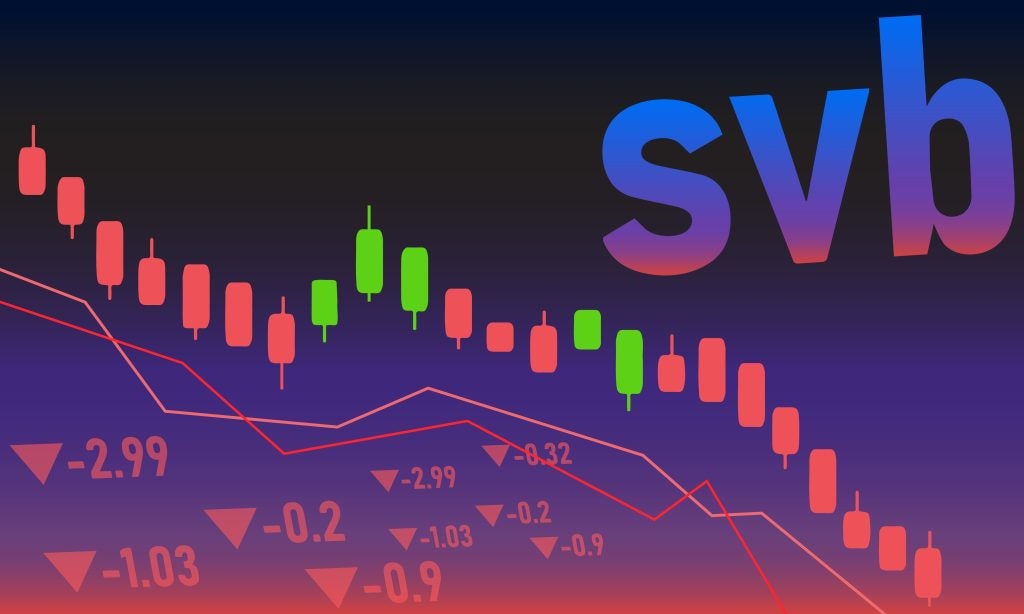The annual snapshot of
US banking market metrics from the Federal Deposit Insurance
Corporation, one of the most eagerly awaited sets of US banking
data, has been released. For the first time in more than a decade,
the number of bank branches in the US fell, reports Douglas
Blakey.
The Federal Deposit Insurance
Corporation (FDIC) has released its Summary of Deposits
(SD) report, an annual snapshot of retail banking data as of 30
June for all FDIC-insured commercial banks, savings institutions
and insured branches of foreign banks in the US.
The SD is one of the more
significant banking surveys, and uniquely gives a comprehensive
snapshot of the world’s largest banking industry.

Some of the headline-grabbing
points for the 2010 SD report include:
How well do you really know your competitors?
Access the most comprehensive Company Profiles on the market, powered by GlobalData. Save hours of research. Gain competitive edge.

Thank you!
Your download email will arrive shortly
Not ready to buy yet? Download a free sample
We are confident about the unique quality of our Company Profiles. However, we want you to make the most beneficial decision for your business, so we offer a free sample that you can download by submitting the below form
By GlobalData- In the past 12 months, the
number of branches in the US fell for the first time in more than a
decade. US banks had 98,519 branches nationwide, down
1% from 99,822 outlets in 2009. The last time there was a decline
was in 1995, with a 0.4% reduction in units to 80,999
branches; - The country’s two largest
banks by branches, Wells Fargo and Bank of America, reduced their
branch networks by around 4% – 275 and 276 units
respectively; - By contrast, the country’s
third-largest bank branches, Chase, increased its network by 48
outlets; Toronto Dominion’s branch network soared by more than 20%,
from 1,047 to 1,287 units; - The largest
year-on-yearpercentage increase in branch count occurred at New
York-based First Niagara. Branch numbers trebled from 116 to 351,
its rapid increase largely attributable to
acquisitions; - Total commercial bank
numbers fell in the past year to 6,676 from 6,995 in June
2009; - Total sector assets remained
flat at $13.21tn; the figure peaked in June 2008 at
$13.29tn; - Total sector deposits inched
up by 1.4% to $7.66tn, and - Banks with total assets in
excess of $10bn increased to 105 from 88 a year ago.

The top-five banks’ ranked by
deposits market share were unchanged from 2009 and together the
biggest five control more than 36% of total US market
share.
Bank of America (BofA)
strengthened its position as the biggest US bank by deposits with a
nationwide market share of 11.71% and deposits of $916bn, up 0.9%
from a year ago. Wells Fargo (9.78% market share) followed with
$750bn, down 1.2% year-on-year.
JPMorgan Chase (8.5% market
share) posted a 2% increase in deposits to $652bn while deposits at
Citigroup (4.04% market share) were down 3.1%.
With a branch network of only
1,052 units, Citigroup retained top slot for average deposits per
branch of the major national retail banking groups.
With $854bn in deposits, New
York has overtaken California ($845bn) as the biggest single market
in the US by deposits. Texas ($447bn), Florida ($410bn) and
Illinois ($360bn) made up the top five.
In Texas, Chase (16.1%)
overtook Bank of America (14.3%) to take top slot for deposits
market share.
With a 33.7% market share of
deposits – up 90 basis points from a year ago – Chase dominates the
New York market; Citi (7.8%) and HSBC (7.7%) trail a distant second
and third respectively.
Employment figures fell at 12
of the 20 largest retail banks in the year to June, with total
employment at the 20 banks declining by 2.5%.
Santander’s US subsidiary, Sovereign, slashed employee
numbers by almost 15%, while Wells Fargo (down 13.3%) and HSBC’s US
arm (down 8.5%) also registered large cuts in staff
numbers.

Looking ahead
The impact of consumer
protection legislation hammering overdraft and credit card fees
will squeeze the largest retail banks and is expected to usher in
the slowest period of revenue growth since the 1930s.
Net earnings at the biggest
US banks have risen at a slower pace in each of the last three
decades, halving to 6% in the last decade from 12% in the
1970s.
Fiscal 2010 is shaping up to
be a depressing year for a number of the leading US retail lenders,
in particular BofA following its third quarter loss of $7.3bn
(after allowing for a $10.4bn goodwill write-down against the card
legislation).

At Chase, cards sector
revenue plummeted by almost a fifth in the third quarter from a
year ago, while CEO Jamie Dimon forecast the bank would lose around
$750m as a result of the aforementioned legislation.
Wells Fargo estimated that
the new restrictions on overdraft fees cut revenue in the third
quarter by $380m.
An additional problem for the
largest banks is a failure to cut expenses at the same pace as
revenue is falling.
In the 12 months to 30 June,
the efficiency rate at 10 of the biggest 20 US banks increased,
notably at Chase (up 5.41percentage points), BofA (up
4.56percentage points) and Wells Fargo (up 5.23percentage
points).
US banks also remain under
pressure to increase provisions for mortgage-related expenses as
questions surrounding foreclosure practices raise concerns over
possible mortgage miss-selling. JPMorgan Chase has already
increased its reserves for mortgage repurchases from $2bn to
$3bn.
Fannie Mae and Freddie Mac have also kept up the pressure
on US banks, demanding that they repurchase loans that failed to
meet certain underwriting guidelines. According to Goldman Sachs,
such claims could total up to $44bn, double the sum set aside to
date.








